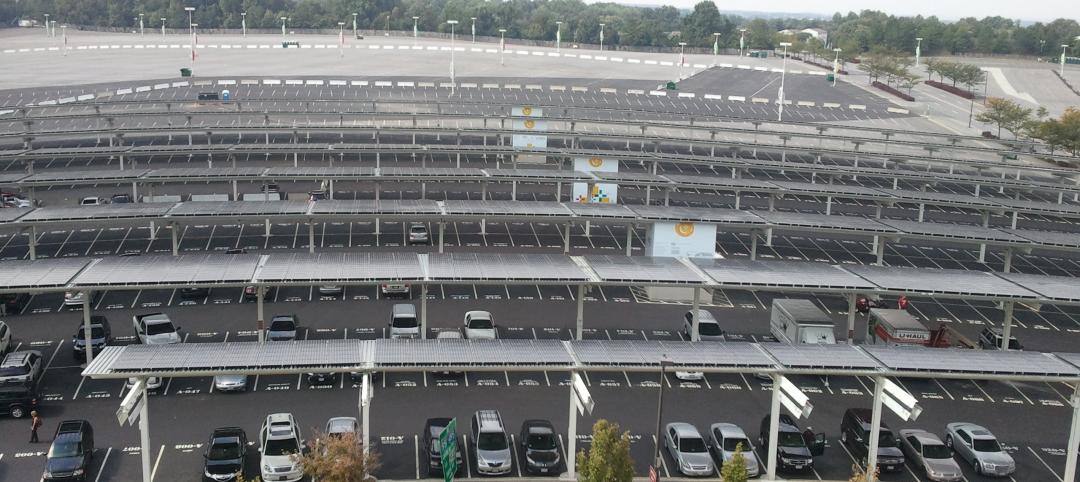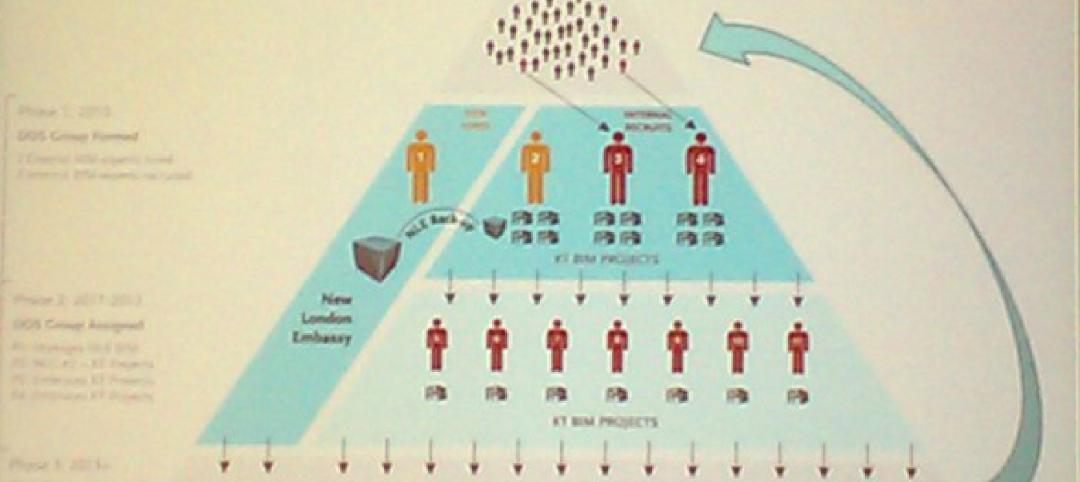 |
| Only 20 geothermal boreholes were drilled at the WestJet complex because a majority of the piping was embedded in the building’s structural piles. |
19. Hybrid Geothermal Technology
 |
20. Kinetic Road Plates Power Purchases
 |
| Graduate student Shawn Shields checks server performance while Dr. Yogendra Joshi looks on at Georgia Tech’s simulated data center. |
21. Cutting the Cooling Load of Data Centers by 15%
Researchers at the Georgia Institute of Technology, Atlanta, are using a 1,100-sf simulated data center to develop and evaluate new ways of controlling heat in commercial data centers, one of the fastest-growing building types in the country. The researchers, led by Professor Yogendra Joshi of the Woodruff School of Mechanical Engineering, have found ways to cut energy center cooling costs 15% by rearranging servers and space for optimal airflow patterns. Their simulated data center uses several different cooling systems, partitions to change room air volumes, sophisticated thermometers attached directly to a server's motherboard, and both real and simulated airflow sensors to measure the output of fans and other systems. The research is sponsored by the U.S. Office of Naval Research and the Consortium for Energy Efficient Thermal Management.
Related Stories
| Sep 16, 2011
Largest solar installation completed at Redskins' football stadium
On game days, solar power can provide up to 20% of FedExField’s power.
| Sep 12, 2011
Living Buildings: Are AEC Firms up to the Challenge?
Modular Architecture > You’ve done a LEED Gold or two, maybe even a LEED Platinum. But are you and your firm ready to take on the Living Building Challenge? Think twice before you say yes.
| Jul 21, 2011
Bringing BIM to the field
A new tablet device for construction professionals puts 3D data at the fingertips of project managers and construction supervisors.
| Nov 2, 2010
11 Tips for Breathing New Life into Old Office Spaces
A slowdown in new construction has firms focusing on office reconstruction and interior renovations. Three experts from Hixson Architecture Engineering Interiors offer 11 tips for office renovation success. Tip #1: Check the landscaping.
| Oct 13, 2010
Test run on the HP Z200 SFF Good Value in a Small Package
Contributing Editor Jeff Yoders tests a new small-form factor, workstation-class desktop in Hewlett-Packard’s line that combines performance of its minitower machine with a smaller chassis and a lower price.















